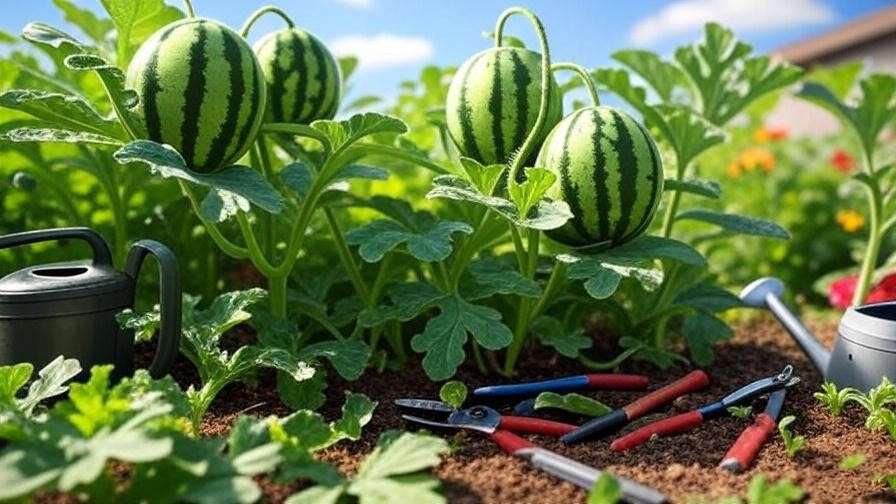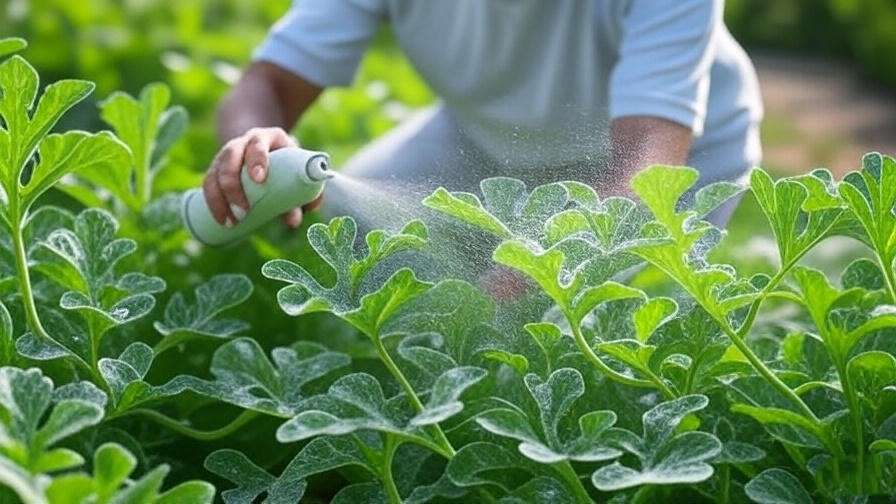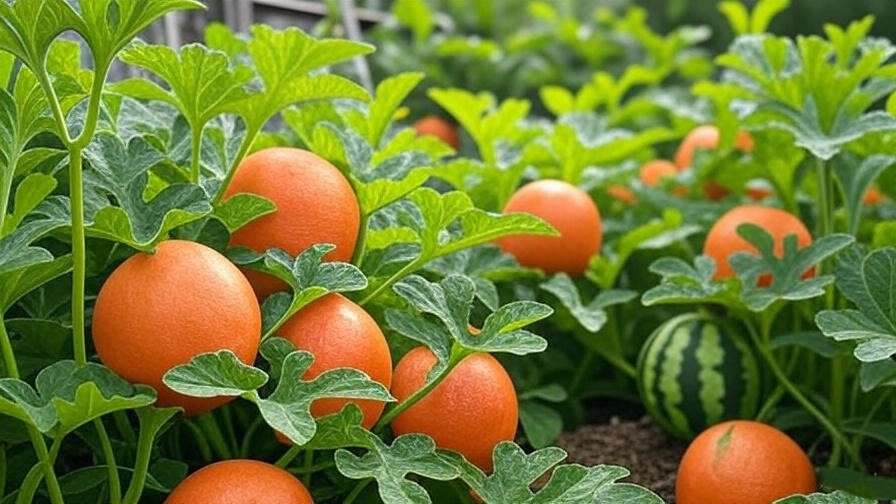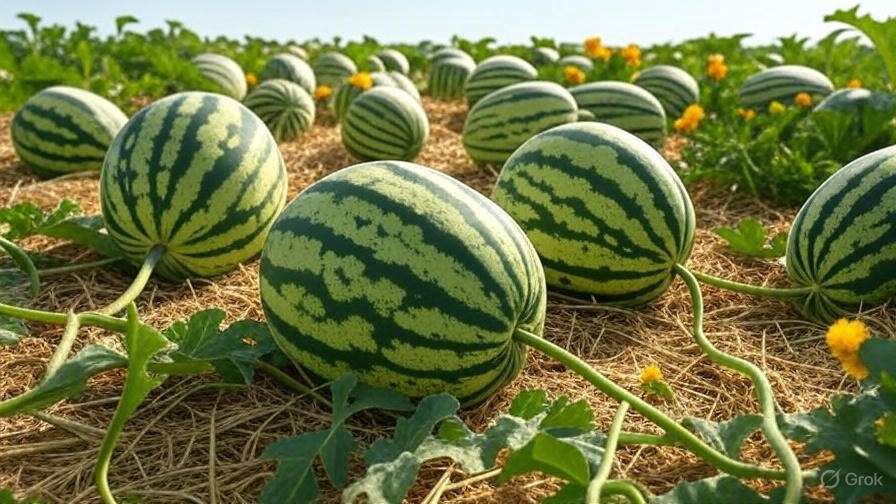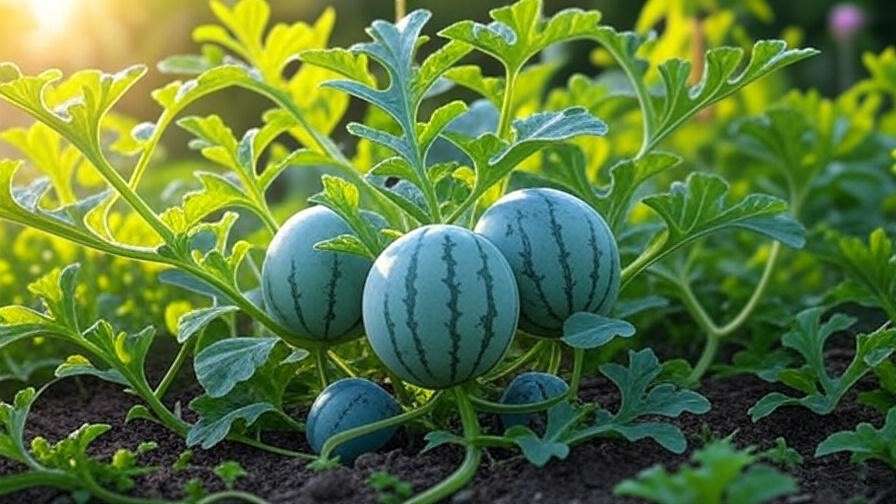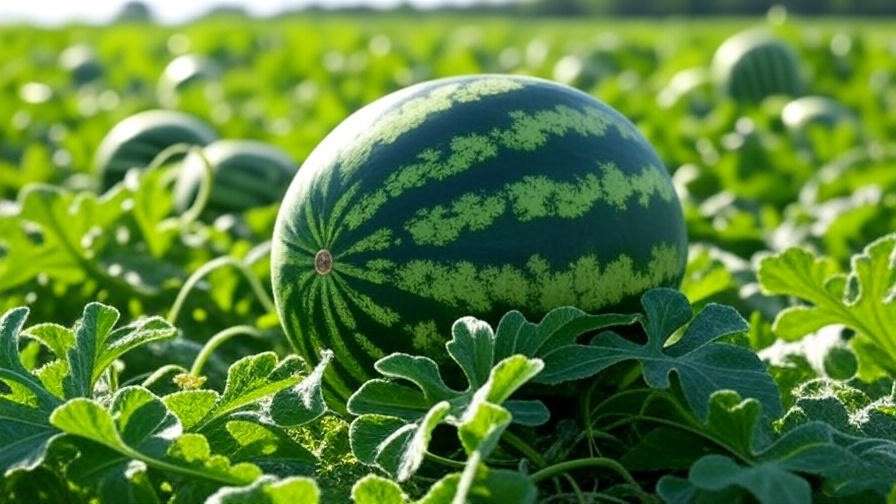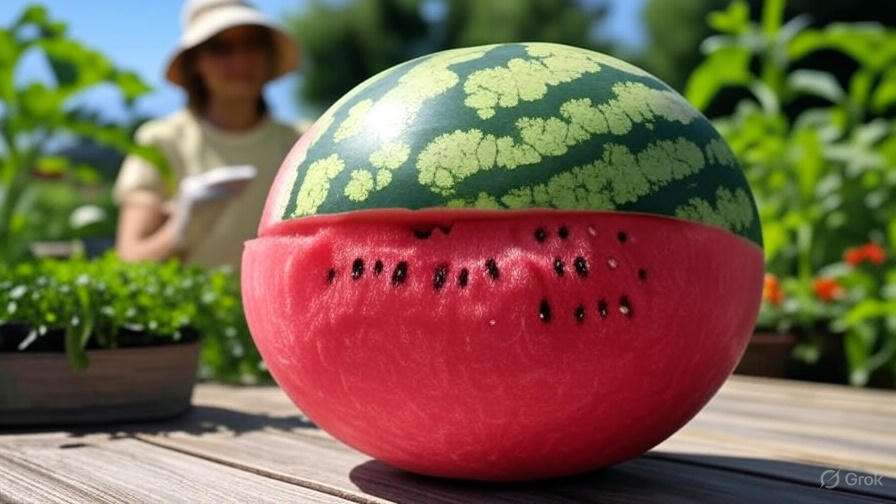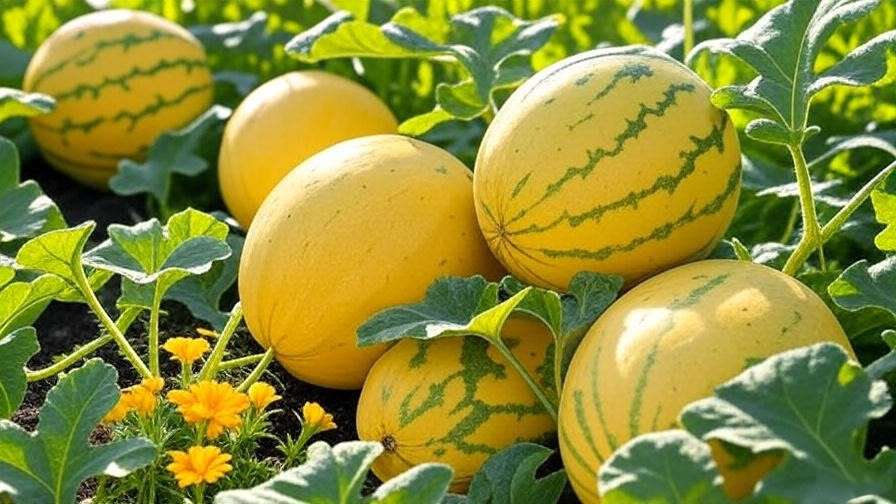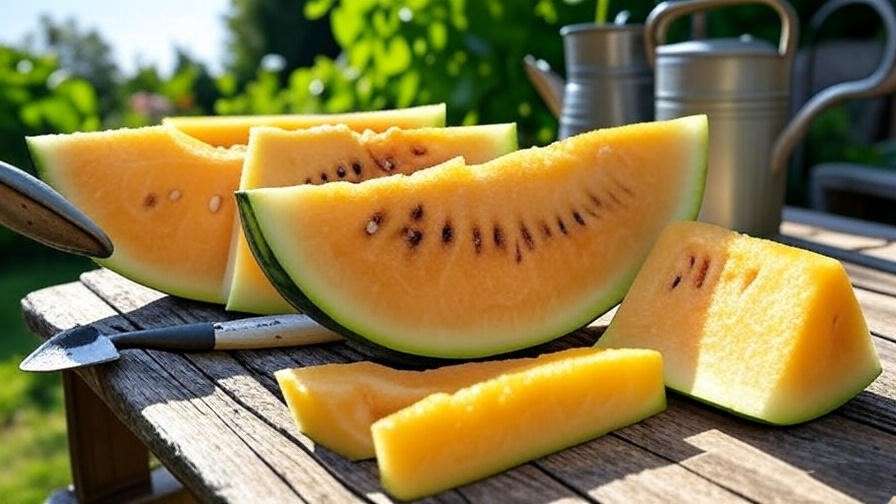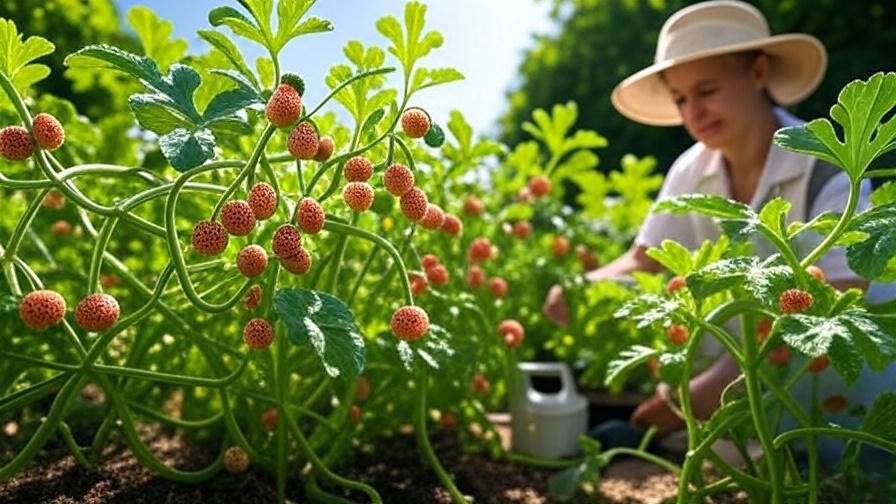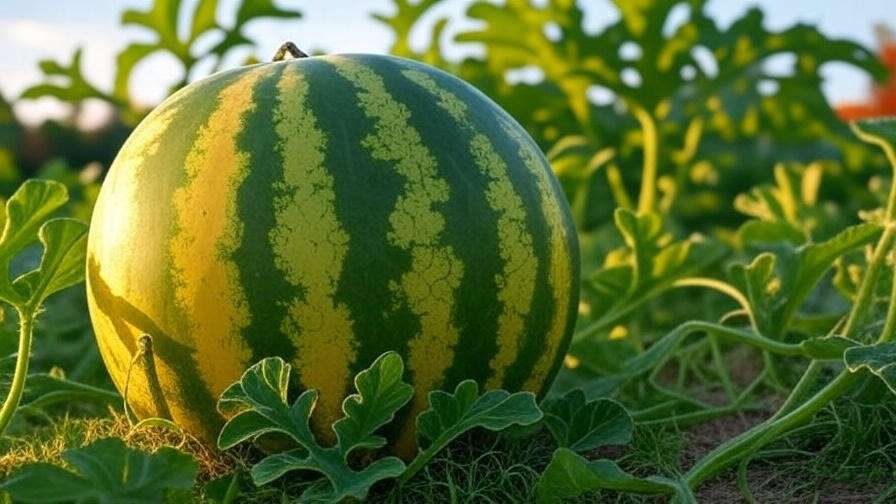Imagine slicing into a vibrant, juicy hybrid watermelon that bursts with sweetness, grown right in your own backyard! Whether you’re a novice gardener or a seasoned grower, cultivating hybrid watermelons can be a rewarding adventure. These modern marvels of horticulture combine the best traits of traditional varieties—think disease resistance, compact size, and mouthwatering flavor. In this comprehensive guide, we’ll walk you through every step to grow thriving hybrid watermelon plants and achieve bountiful harvests. Backed by decades of horticultural expertise and research from top agricultural institutions, this article delivers actionable advice to ensure your success. Let’s dig in! 🌞
What Are Hybrid Watermelons? Understanding Their Unique Traits 🌿
Defining Hybrid Watermelons
Hybrid watermelons are created through controlled crossbreeding of two distinct watermelon varieties to produce plants with superior characteristics. Unlike heirloom varieties, hybrids are engineered for specific traits like enhanced flavor, seedlessness, or resilience to pests and diseases. Popular varieties include Crimson Sweet hybrids, known for their deep red flesh, and seedless options like Triploid hybrids, which are perfect for hassle-free eating.
Benefits of Growing Hybrid Watermelons
Why choose hybrids? They offer sweeter, juicier fruit, higher yields, and adaptability to diverse climates. Many hybrids are bred for compact vines, making them ideal for small gardens or container growing. Their disease resistance reduces the need for chemical treatments, appealing to organic gardeners. For example, the Sugar Baby hybrid thrives in cooler climates, while Charleston Gray hybrids excel in hotter regions.
Hybrid vs. Heirloom Watermelons
Hybrids differ from heirlooms in consistency and performance. Heirlooms offer unique flavors but are often less predictable in yield and disease resistance. Hybrids, on the other hand, are designed for reliability. Here’s a quick comparison:
| Trait | Hybrid Watermelons | Heirloom Watermelons |
| Yield | High, consistent | Variable |
| Disease Resistance | Strong (e.g., resistant to fusarium wilt) | Moderate to low |
| Flavor | Sweet, uniform | Unique, sometimes less sweet |
| Seed Saving | Not true-to-type | True-to-type, ideal for seed saving |
Preparing for Success: Planning Your Hybrid Watermelon Garden 📋
Choosing the Right Hybrid Watermelon Variety
Selecting the perfect hybrid variety depends on your climate, space, and taste preferences. For warmer regions (USDA Zones 8–10), try the seedless Orangeglo hybrid for its tangy-sweet flavor. In cooler climates (Zones 4–7), the compact Sugar Baby hybrid is a top choice. Check with local nurseries or extension services for region-specific recommendations. Always purchase seeds or transplants from reputable suppliers to ensure quality.
Understanding Soil and Site Requirements
Hybrid watermelons thrive in well-drained, loamy soil with a pH of 6.0–6.8. Test your soil using a home kit or send a sample to a local extension service. Amend acidic soils with lime or add organic compost to improve fertility. Choose a site with 6–8 hours of direct sunlight daily ☀️, as watermelons are sun-loving plants. Avoid low-lying areas prone to waterlogging.
Expert Tip: Mix in aged manure or compost two weeks before planting to boost soil nutrients and structure.
Timing Your Planting
Timing is critical for hybrid watermelons. Plant seeds or transplants after the last frost when soil temperatures reach at least 70°F (21°C). In most regions, this means late spring to early summer (April–June). For colder climates, start seeds indoors 3–4 weeks before transplanting. Use a soil thermometer to confirm optimal conditions.
Step-by-Step Guide to Planting Hybrid Watermelons 🌾
Starting from Seeds or Transplants
You can grow hybrid watermelons from seeds or transplants. Seeds are cost-effective and offer more variety, but transplants save time. To germinate seeds, soak them in warm water for 12 hours, then plant in peat pots indoors. Maintain a temperature of 75–85°F for 7–10 days until sprouts appear. For transplants, select healthy plants with 2–3 true leaves and no signs of yellowing.
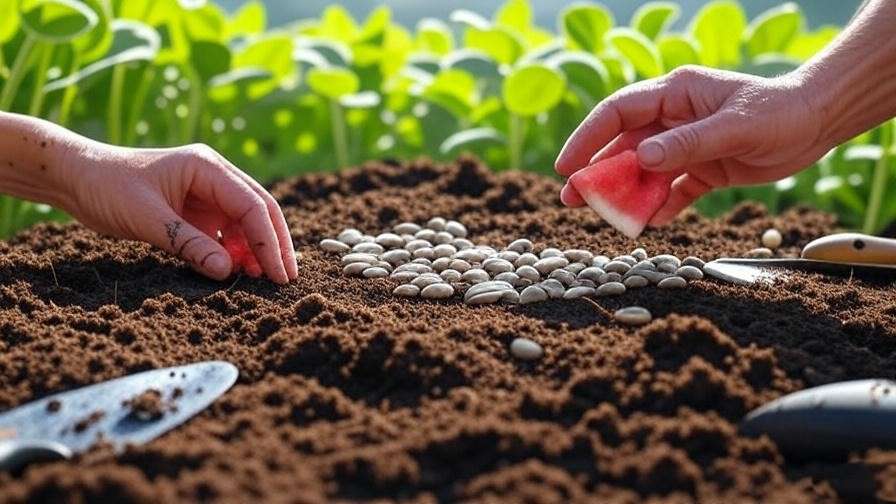
Proper Spacing and Planting Techniques
Space hybrid watermelon plants 3–5 feet apart in rows 6–10 feet apart to prevent overcrowding and ensure air circulation. Mound planting—creating raised hills 6–8 inches high—improves drainage and warms the soil faster. Plant 2–3 seeds per mound, 1 inch deep, and thin to the strongest seedling after germination. For transplants, dig a hole slightly larger than the root ball and plant at the same depth.
Visual Aid: Imagine a garden layout with mounds spaced in a grid, allowing vines to spread freely without tangling.
Watering and Mulching for Success
Watermelons need consistent moisture, especially during germination and fruit development. Provide 1–2 inches of water weekly, using drip irrigation or a soaker hose to keep foliage dry. Apply a 2–3-inch layer of organic mulch (straw, wood chips, or grass clippings) around plants to retain moisture, regulate soil temperature, and suppress weeds.
Caring for Your Hybrid Watermelon Plants 🌼
Watering and Irrigation Best Practices
Hybrid watermelons require deep, even watering to develop juicy fruit. Water at the base of plants early in the morning to reduce evaporation. During flowering and fruiting, increase watering to 2 inches per week in hot weather. Watch for signs of overwatering (yellowing leaves, soggy soil) or underwatering (wilting, dry soil).
Expert Insight: Install a rain gauge to monitor water levels and adjust irrigation based on rainfall.
Fertilizing for Maximum Growth
Fertilize hybrid watermelons with a balanced approach. Apply a nitrogen-rich fertilizer (e.g., 10-10-10) at planting to promote leafy growth. Switch to a phosphorus- and potassium-heavy formula (e.g., 5-10-10) when flowers appear to support fruit development. Organic options like fish emulsion or compost tea work well. Fertilize every 2–3 weeks, following package instructions.
Case Study: A Virginia gardener doubled their yield by using a 5-10-10 fertilizer every 10 days during fruit set, resulting in 15-pound watermelons.

Pruning and Training Vines
Pruning hybrid watermelon vines improves air circulation and directs energy to fruit production. Remove damaged or overcrowded vines, leaving 2–3 main runners per plant. For small spaces, train vines onto a sturdy trellis or A-frame, supporting developing fruit with slings made from old t-shirts. Use clean, sharp shears to avoid spreading disease.
Protecting Your Plants: Pest and Disease Management 🐛
Common Pests Affecting Hybrid Watermelons
Pests like aphids, cucumber beetles, and spider mites can threaten your crop. Aphids suck plant sap, causing curled leaves, while cucumber beetles spread bacterial wilt. Inspect plants weekly and remove pests manually or use insecticidal soap for organic control. Neem oil is effective for spider mites. Plant marigolds or nasturtiums nearby to repel pests naturally.
Expert Tip: Introduce beneficial insects like ladybugs to control aphid populations.
Preventing and Treating Diseases
Hybrid watermelons are bred for disease resistance, but issues like powdery mildew, fusarium wilt, and anthracnose can still occur. Powdery mildew appears as white patches on leaves; treat with a baking soda spray (1 tbsp per gallon of water). Fusarium wilt causes wilting vines; remove affected plants immediately. Ensure good air circulation and avoid overhead watering to prevent diseases.
| Disease | Symptoms | Solution |
| Powdery Mildew | White powdery spots on leaves | Apply fungicide or baking soda spray |
| Fusarium Wilt | Wilting, yellowing vines | Remove affected plants, improve drainage |
| Anthracnose | Dark lesions on leaves and fruit | Use copper-based fungicide, rotate crops |
Weather and Environmental Challenges
Extreme heat, drought, or heavy rain can stress hybrid watermelons. During heatwaves, provide afternoon shade with cloth covers. In drought, mulch heavily and water deeply. For heavy rain, ensure proper drainage to prevent root rot. Row covers protect young plants from unexpected cold snaps.
Harvesting and Storing Your Hybrid Watermelons 🍈
Knowing When to Harvest
Timing is everything when harvesting hybrid watermelons. Look for these telltale signs of ripeness: the tendril closest to the fruit turns brown and dries up, the rind develops a dull, waxy sheen, and the underside (where the melon rests on the ground) turns creamy yellow. The classic “thump test” can help—tap the melon and listen for a deep, hollow sound. Different hybrids mature at different rates, typically 70–90 days from planting. For example, Sugar Baby hybrids are ready in about 75 days, while larger varieties like Crimson Sweet may take up to 85 days.
Harvesting Techniques
To harvest, use clean, sharp pruning shears to cut the stem about 2 inches above the fruit. Avoid pulling or twisting the melon, as this can damage the vine or fruit. Wear gloves to protect your hands and handle the melon gently to prevent bruising. If you’re harvesting multiple melons, clean your tools between cuts to avoid spreading disease. Place harvested watermelons in a basket or padded container for transport.
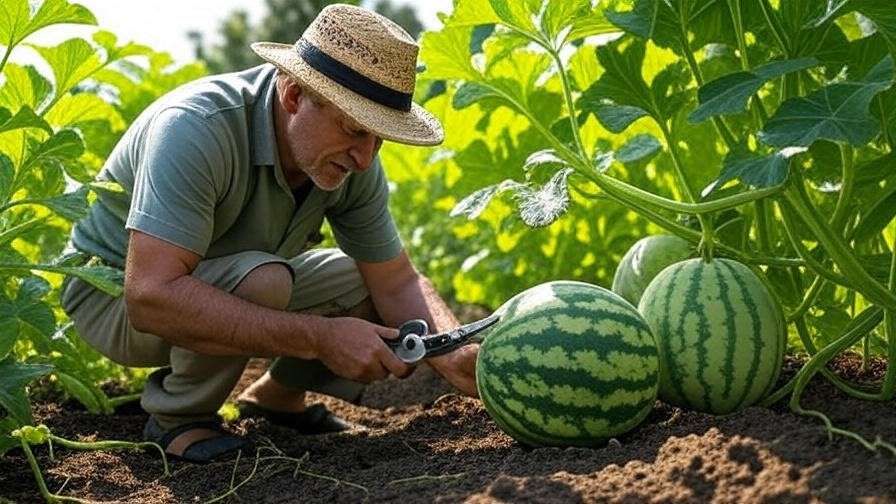
Storing and Preserving Your Harvest
Store hybrid watermelons in a cool, dry place (50–60°F) with good ventilation, where they can last 2–3 weeks. Avoid stacking melons, as pressure can cause bruising. For longer-term preservation, cut the flesh into cubes and freeze in airtight bags for up to 6 months. Alternatively, blend the flesh into juice and store in the fridge for up to 3 days.
Recipe Idea: Try a refreshing hybrid watermelon smoothie! Blend 2 cups of watermelon cubes, 1 cup of frozen strawberries, a splash of lime juice, and a handful of mint leaves for a hydrating summer treat. 🍹
Troubleshooting Common Hybrid Watermelon Problems 🛠️
Why Aren’t My Watermelons Growing?
If your hybrid watermelons aren’t thriving, common culprits include poor pollination, nutrient deficiencies, or improper watering. Watermelons rely on bees for pollination—ensure your garden attracts pollinators by planting flowers like lavender or bee balm nearby. Nutrient deficiencies, especially low nitrogen or potassium, can stunt growth; test your soil and adjust fertilization. Inconsistent watering can also halt development, so maintain steady moisture levels.
Solution: Hand-pollinate by transferring pollen from male to female flowers using a small brush if bee activity is low. Apply a balanced fertilizer and check soil moisture with a meter.
Small or Flavorless Fruit
Small or bland hybrid watermelons often result from overcrowding, insufficient sunlight, or poor soil quality. Overcrowded vines compete for resources, leading to smaller fruit. Less than 6 hours of sunlight daily can weaken flavor development. Low potassium levels in the soil can also reduce sweetness.
Solution: Thin plants to proper spacing, ensure full sun exposure, and apply a potassium-rich fertilizer (e.g., 5-10-10) during fruiting. Test soil to confirm nutrient levels.
Cracked or Misshapen Watermelons
Cracked fruit often stems from inconsistent watering, where rapid water uptake after a dry spell causes the melon to expand too quickly. Misshapen watermelons may result from poor pollination or physical obstructions like rocks or dense soil.
Expert Advice: Water consistently, aiming for 1–2 inches per week, and use mulch to stabilize soil moisture. Remove debris from the growing area and ensure proper pollination.
Expert Tips for Maximizing Your Hybrid Watermelon Yield 🚀
- Hand-Pollinate for Better Fruit Set: If pollinators are scarce, use a small paintbrush to transfer pollen from male to female flowers (female flowers have a small bulb at the base).
- Use Reflective Mulch: Silver or red plastic mulch reflects sunlight onto the plant, boosting photosynthesis and fruit size.
- Rotate Crops Annually: Prevent soil-borne diseases by planting watermelons in a new spot each year.
- Monitor Soil Temperature: Use a soil thermometer to ensure temperatures stay above 70°F during early growth.
- Support Heavy Fruit: For trellised vines, use fabric slings to support developing melons and prevent vine damage.
Success Story: A small-space gardener in Texas grew 22 hybrid watermelons in a 10×10-foot plot by using trellises, reflective mulch, and hand-pollination, yielding melons up to 15 pounds each!

FAQs About Growing Hybrid Watermelons ❓
Q1: How long does it take for hybrid watermelons to mature?
A: Most hybrid watermelons take 70–90 days to mature, depending on the variety. Smaller hybrids like Sugar Baby mature faster (around 75 days), while larger ones like Charleston Gray take closer to 85 days.
Q2: Can I grow hybrid watermelons in containers?
A: Yes! Choose compact varieties like Bush Sugar Baby and use a 15–20-gallon container with well-draining soil. Ensure full sun and support vines with a trellis.
Q3: What’s the best way to prevent pests organically?
A: Plant companion flowers like marigolds to deter pests, use neem oil for aphids and mites, and introduce beneficial insects like ladybugs. Regularly inspect plants for early signs of infestation.
Q4: Are hybrid watermelons seedless? How does that work?
A: Some hybrids, like Triploid varieties, are seedless due to crossbreeding that results in sterile seeds. They require a pollinator variety (like a seeded watermelon) planted nearby to produce fruit.
Q5: How do I know if my soil is suitable for watermelons?
A: Test soil pH (aim for 6.0–6.8) and ensure good drainage. Add compost or aged manure to improve fertility. A soil test from a local extension service can provide detailed insights.
Conclusion: Grow Your Best Hybrid Watermelons Yet! 🌟
Growing hybrid watermelons is a delightful journey that combines science, patience, and a touch of creativity. By selecting the right variety, preparing your soil, and following expert care techniques, you can enjoy a bountiful harvest of sweet, juicy melons. From proper watering to pest management, this guide equips you with the tools to succeed, whether you’re cultivating in a sprawling garden or a compact container. Start your hybrid watermelon adventure today and savor the fruits of your labor! Share your growing tips in the comments or try our recommended varieties for a season of success.

